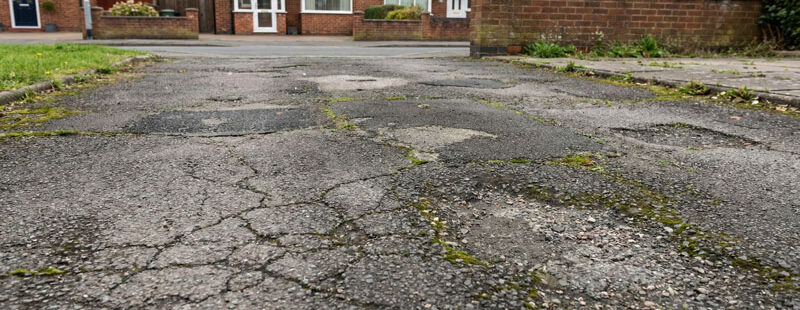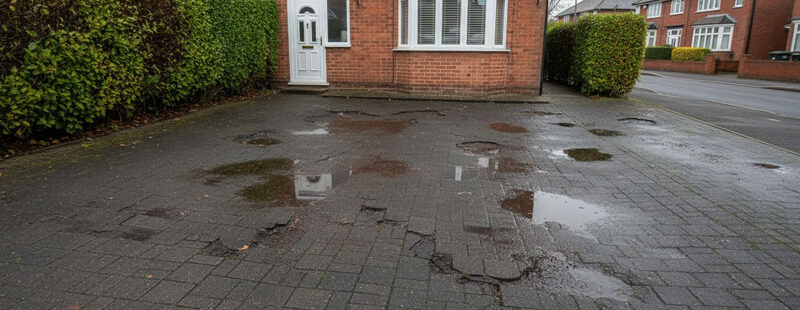
- min min
- No Comments
- June 11, 2025
How Long Does a Road Surface Last? Key Factors That Affect Lifespan
Understanding road surface lifespan is vital for property owners, facility managers, and local authorities. Whether you’re maintaining a tarmac driveway in Hertfordshire or overseeing larger car park tarmac services in Hertfordshire, the durability of your surface directly affects safety, costs, and functionality.
But how long should a road surface last? The answer depends on several key factors—from materials to environmental conditions and usage levels.
Average Lifespan of Common Road Surfaces
Different materials yield different results when it comes to lifespan:
- Tarmac (Asphalt): 15–25 years
- Concrete: 20–40 years
- Gravel or Loose Stone: 5–10 years
For many in the region, tarmac surfacing in Hertfordshire is the go-to option due to its cost-effectiveness and performance in variable UK weather.
1. Material Quality
The quality of the materials used in a tarmac installation in Hertfordshire plays a huge role in surface durability. High-grade tarmac will naturally last longer and perform better under stress. Inferior blends may lead to early cracking, disintegration, and water ingress.
2. Sub-Base and Preparation
One of the most overlooked factors affecting road surface lifespan is the preparation beneath the surface. A poorly compacted or thin sub-base will shift over time, causing dips, cracks, and eventual failure.
Commercial clients, especially those hiring commercial tarmac contractors in Hertfordshire, should ensure that thorough groundwork is included in the project plan.
3. Traffic Load
Heavier and more frequent traffic accelerates wear and tear. While a tarmac pathway in Hertfordshire may last decades with low foot traffic, an access road used by HGVs will experience stress that shortens its service life.
4. Drainage Design
Water is the enemy of all paved surfaces. Without adequate drainage, water seeps into cracks, freezes in winter, and expands—causing potholes and surface breakdown.
Effective tarmac surfacing in Hertfordshire projects always include proper slope design and water management strategies to mitigate this risk.
5. Climate and Weather Exposure
The UK’s freeze-thaw cycles can wreak havoc on tarmac surfaces. Regular exposure to frost, UV radiation, and heavy rain deteriorates surfaces over time.
Strategic maintenance—especially for high-use surfaces like tarmac driveways in Hertfordshire—can slow the effects of weather damage.
6. Maintenance Frequency
A neglected road surface deteriorates rapidly. In contrast, regularly cleaned and sealed surfaces can retain their structure far longer. Services like sealcoating or crack sealing prolong the road surface lifespan significantly.
7. Usage Type
The intended use of the surface matters. Car parks, for instance, experience different stress patterns than residential driveways. For car park tarmac services in Hertfordshire, planners need to factor in turning pressure, parking loads, and frequent stop-start motion.
Signs of Surface Ageing
Watch for the following symptoms of declining road surface lifespan:
- Cracking or “alligator skin” patterns
- Potholes or surface craters
- Standing water after rainfall
- Fading or crumbling edges
- Uneven or soft patches
Addressing these early—through repair or resurfacing—helps prevent major costs down the line.
How to Maximise Road Surface Lifespan
Invest in quality materials for every layer of the installation.
Work with experienced tarmac contractors who understand local conditions.
Schedule annual inspections and minor repairs.
Add protective coatings such as sealants.
Keep drainage systems clear and operational.
Whether it’s a tarmac pathway in Hertfordshire or a commercial car park, proactive care ensures that the surface serves its full life expectancy.
Conclusion
The road surface lifespan isn’t fixed—it’s a result of many interacting factors. From traffic loads to climate conditions, every element influences how long your surface will last.
By understanding these variables and investing in proper materials, design, and maintenance, surface longevity can often exceed expectations—saving you thousands in the long term.





